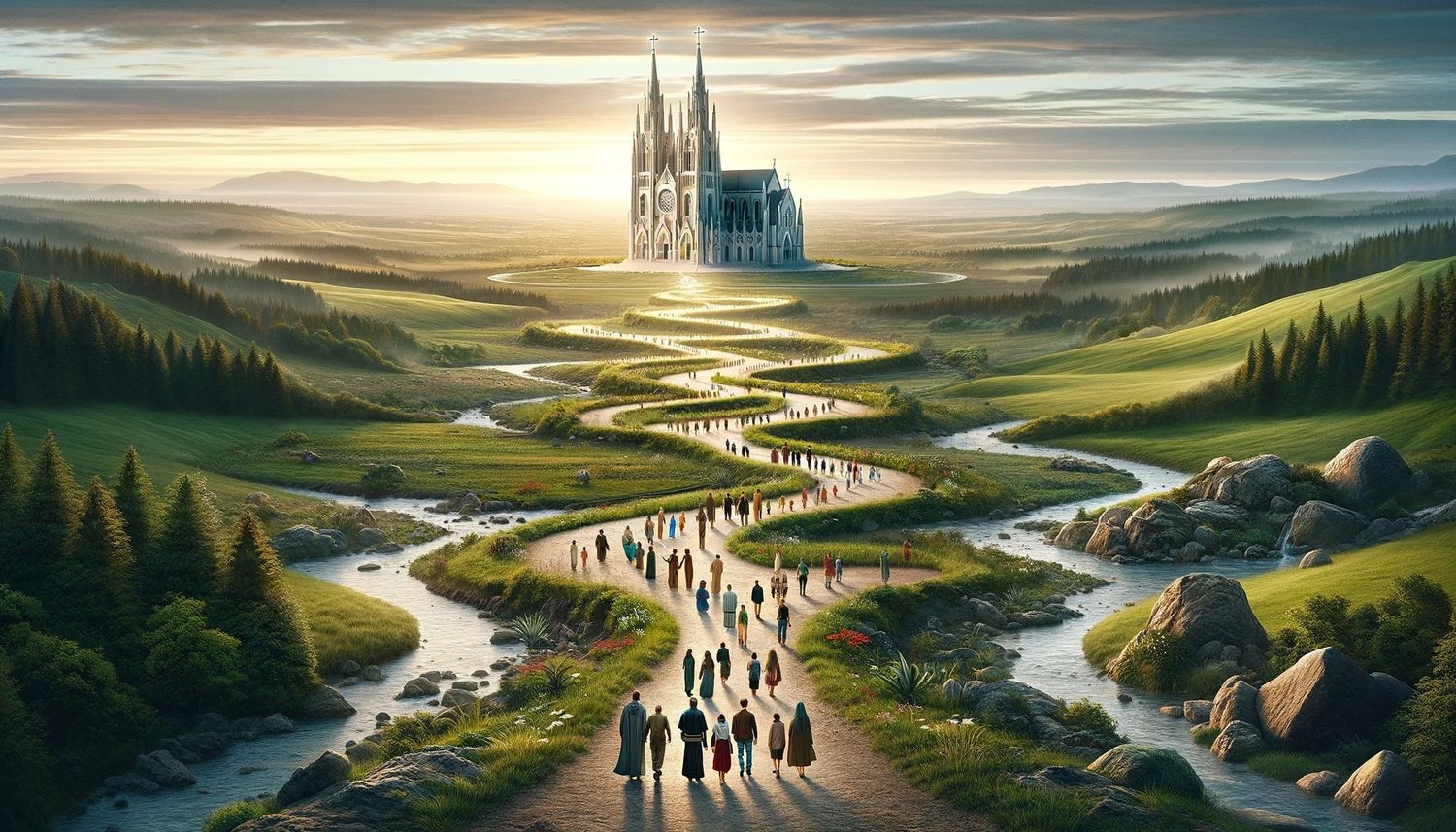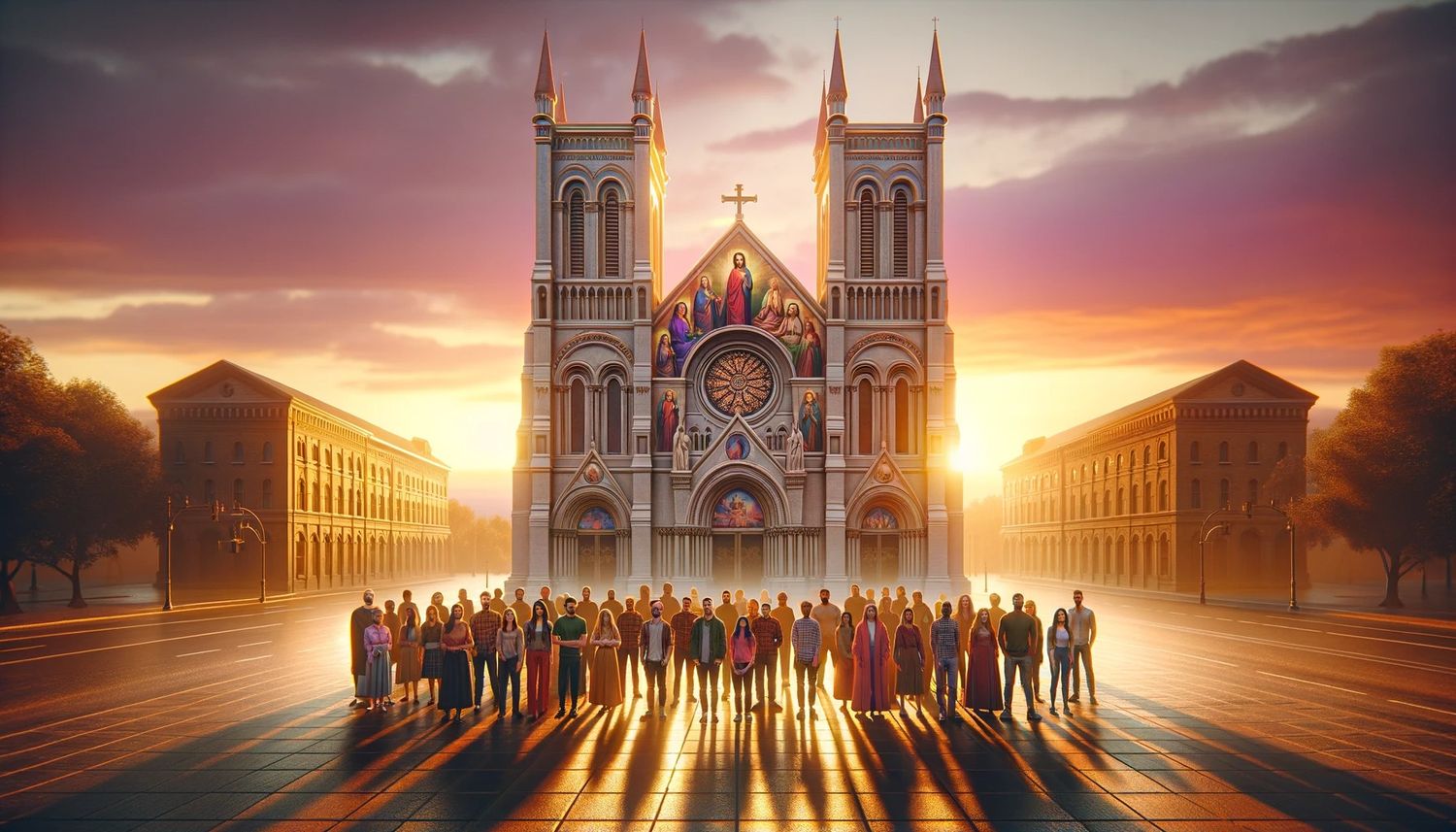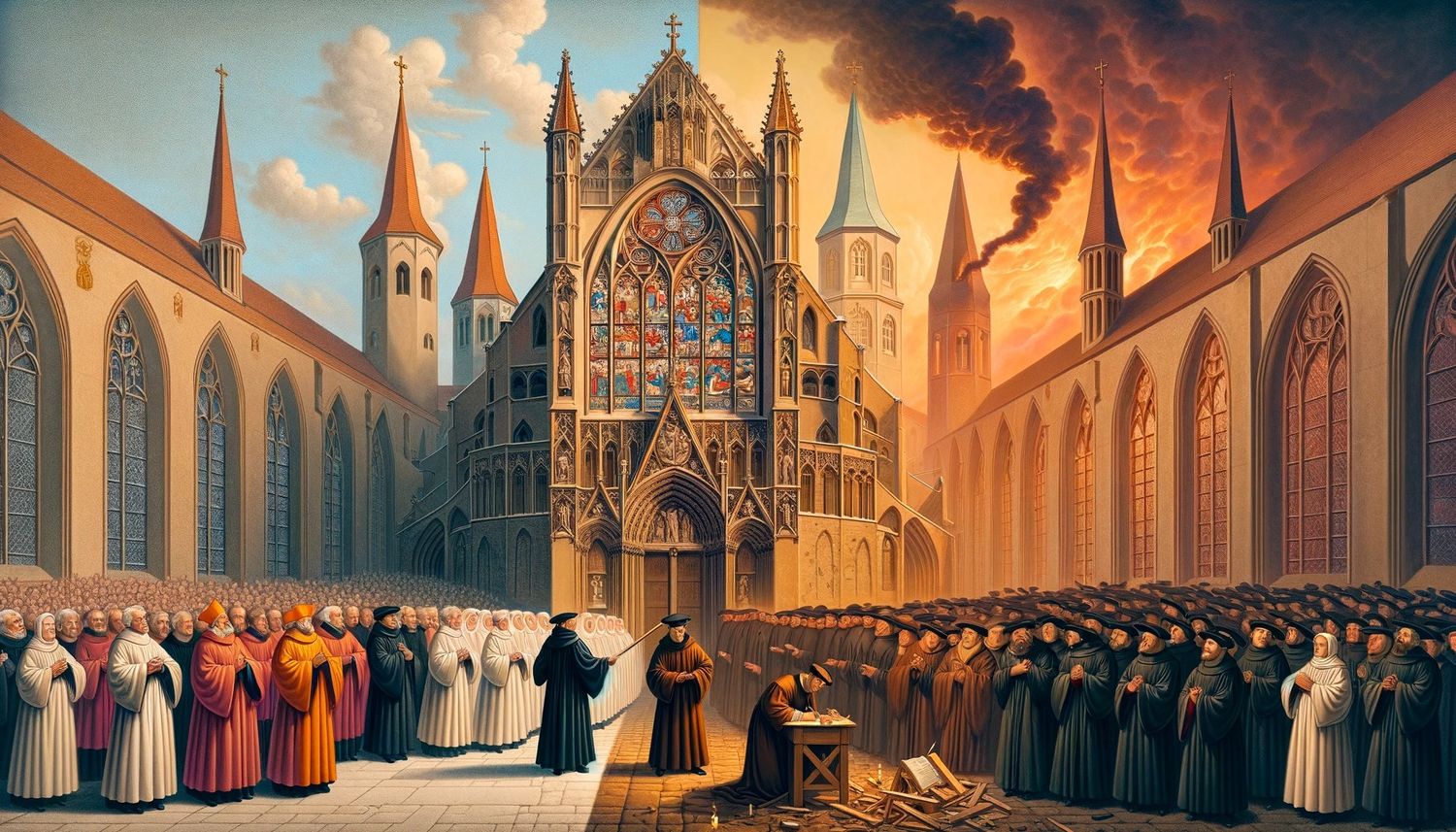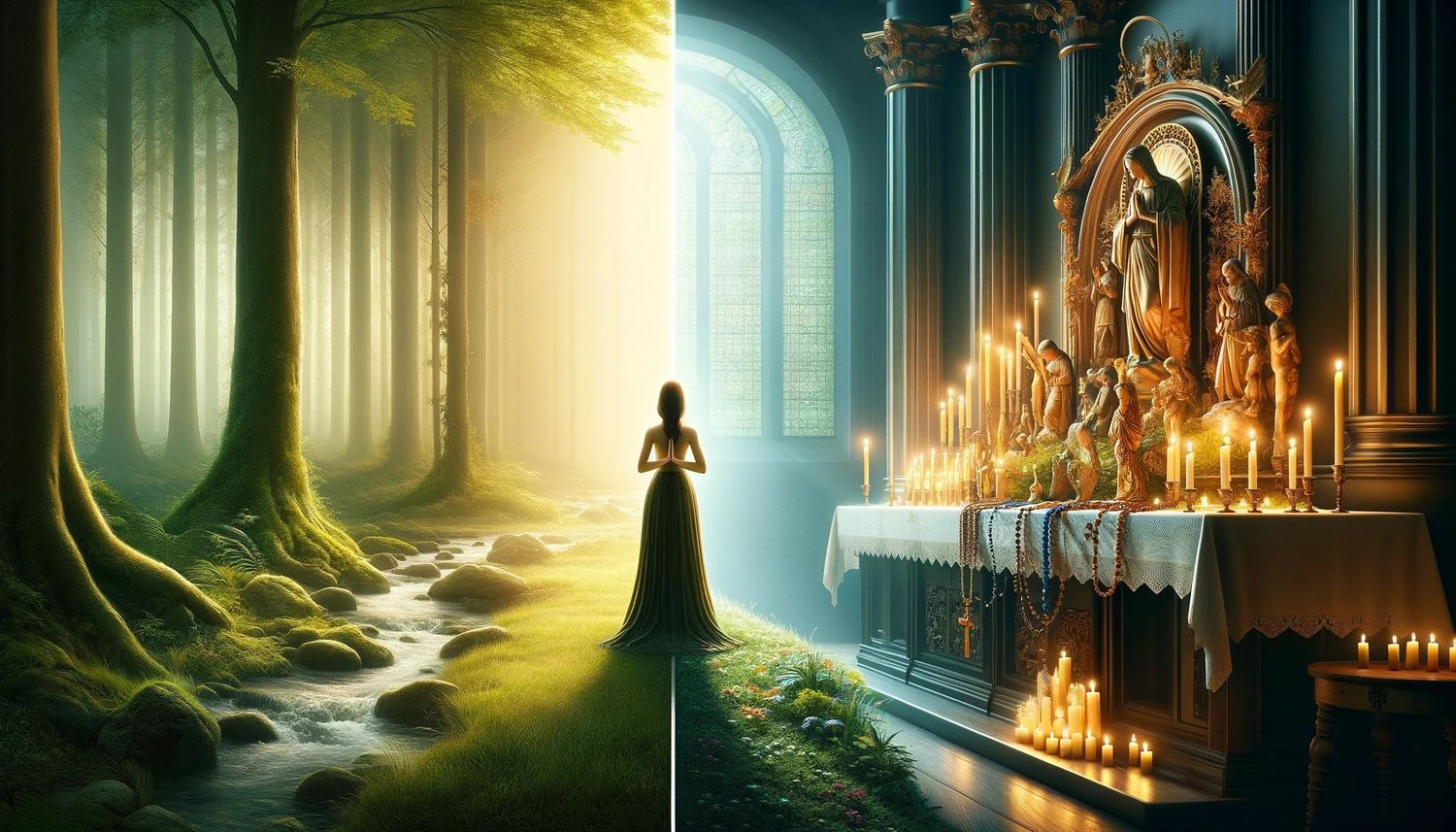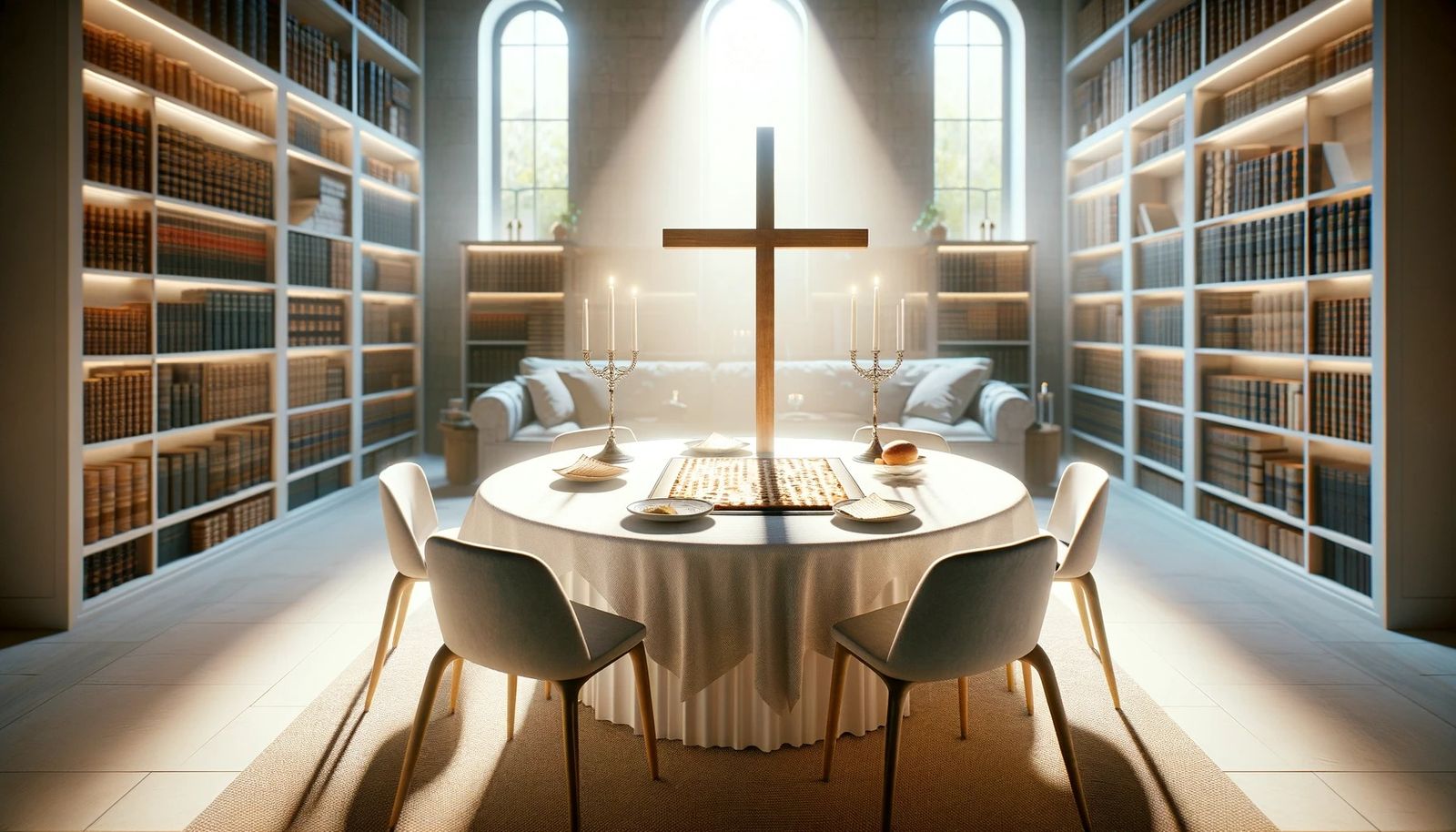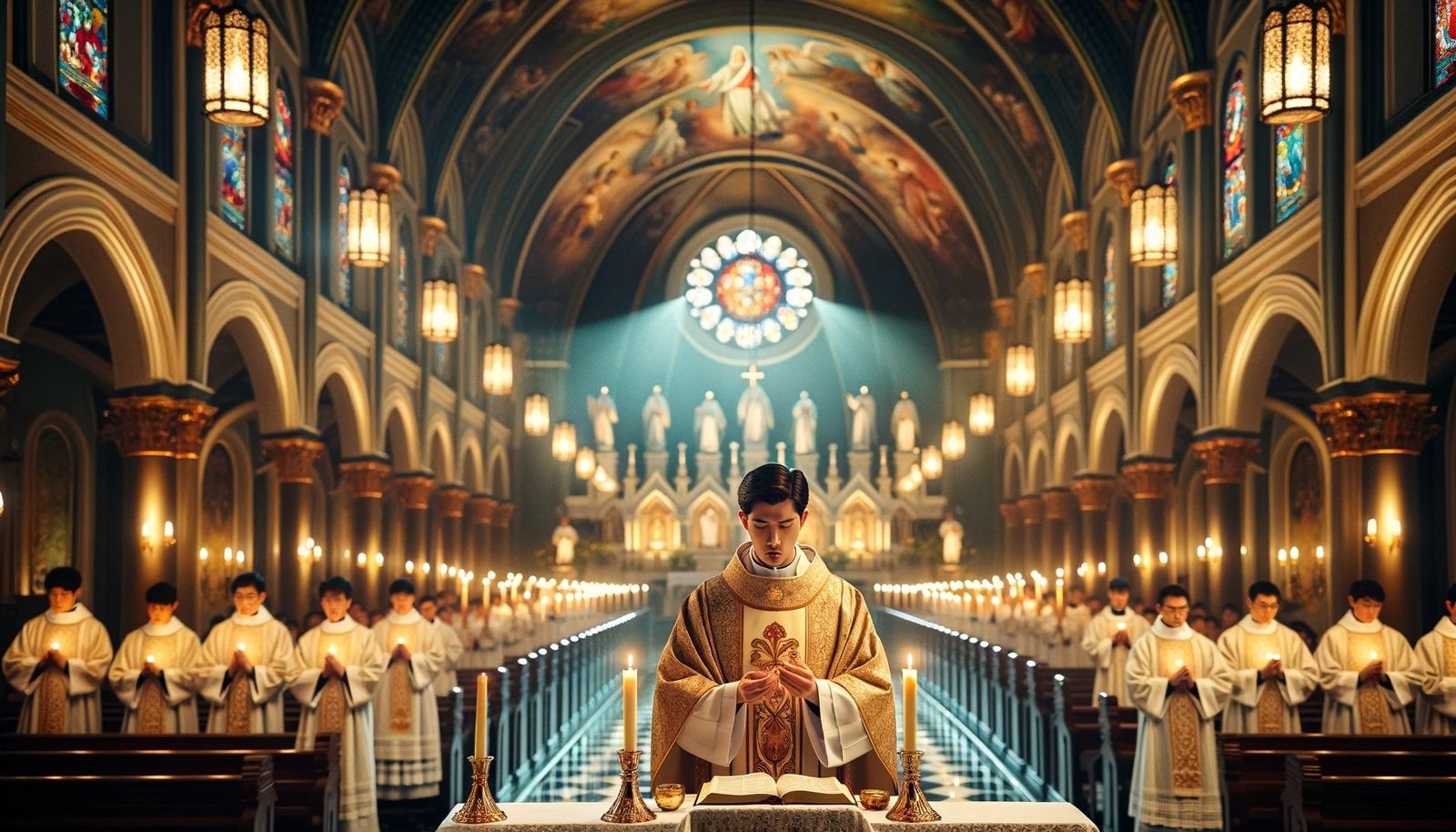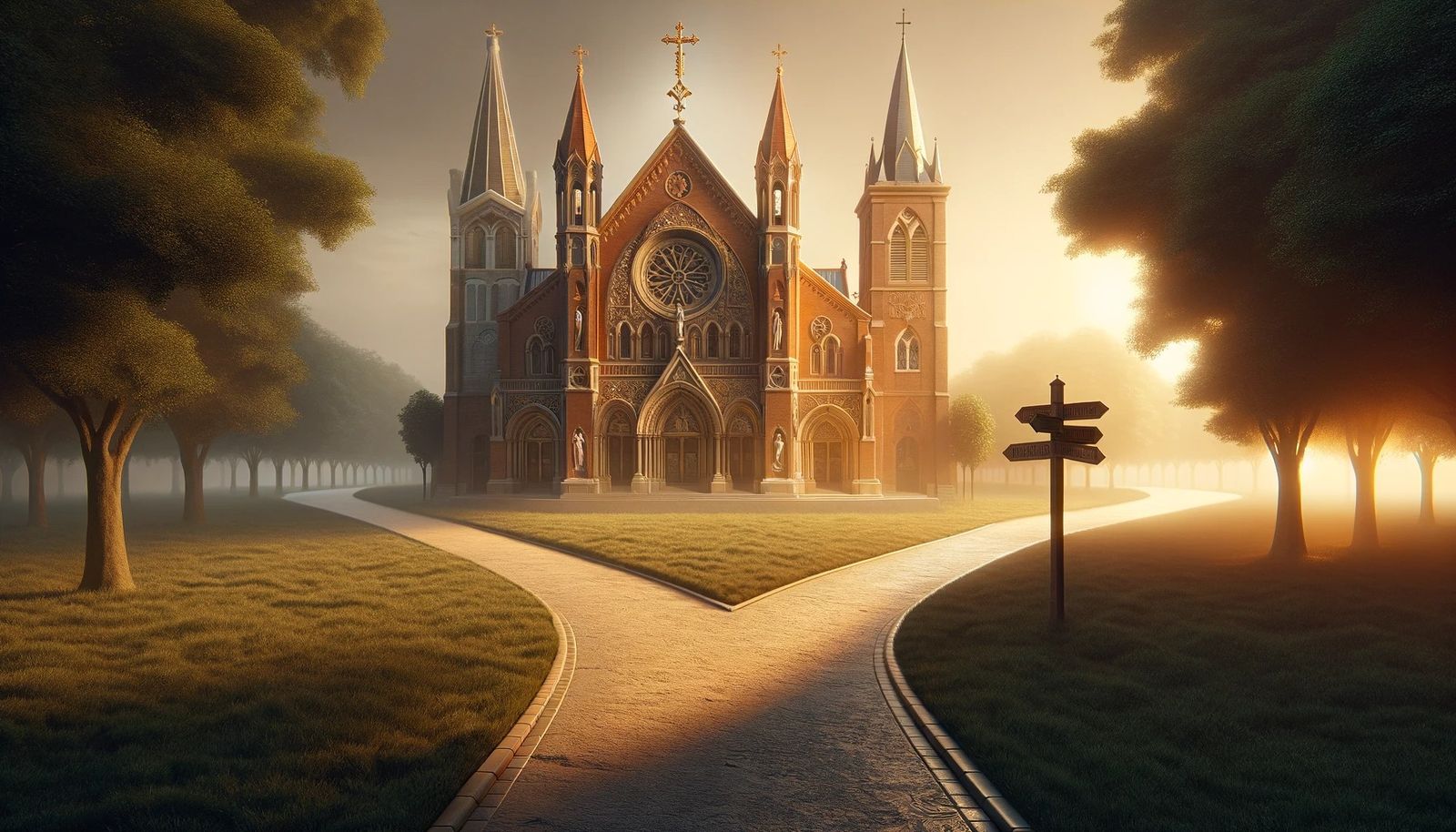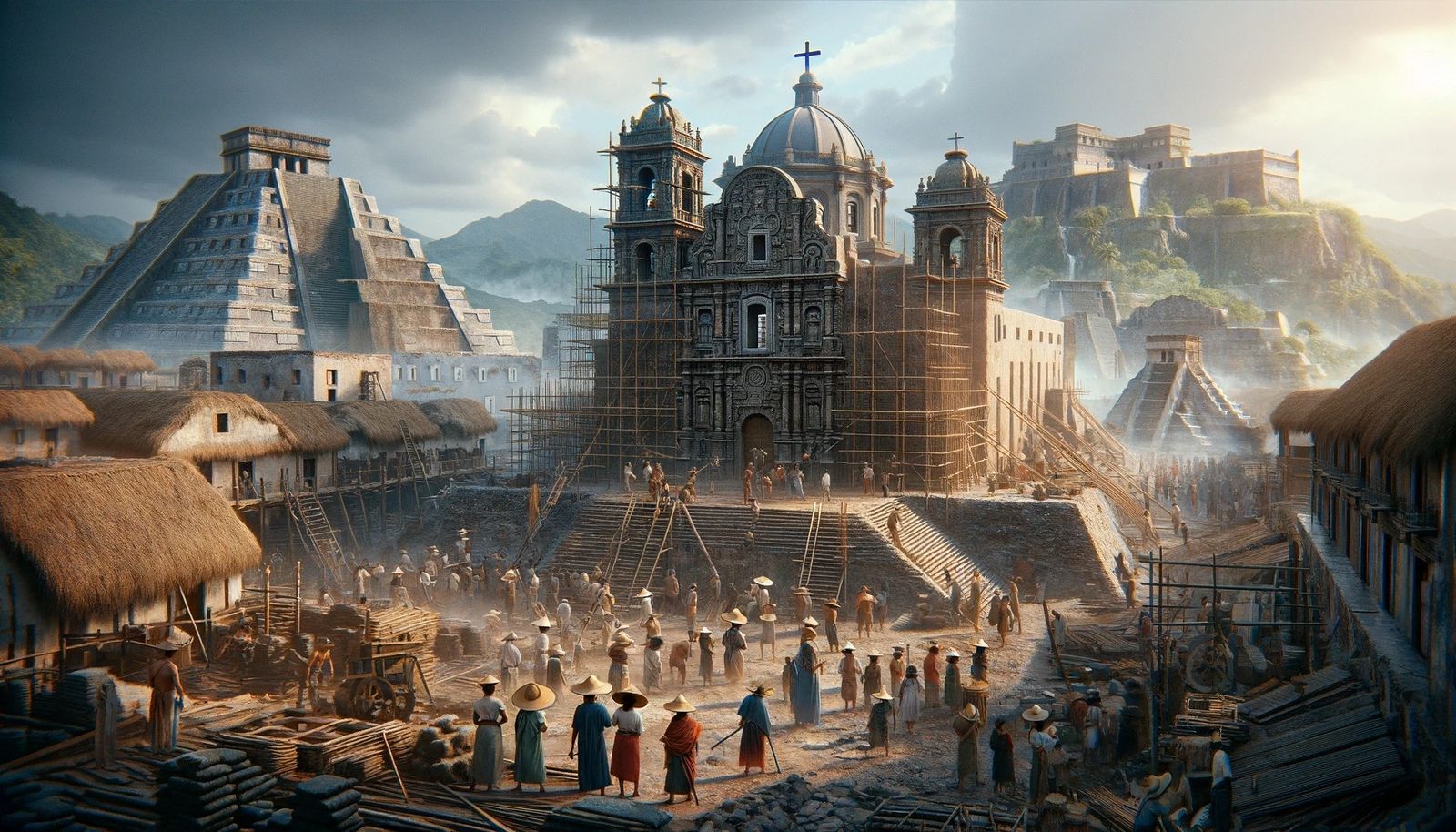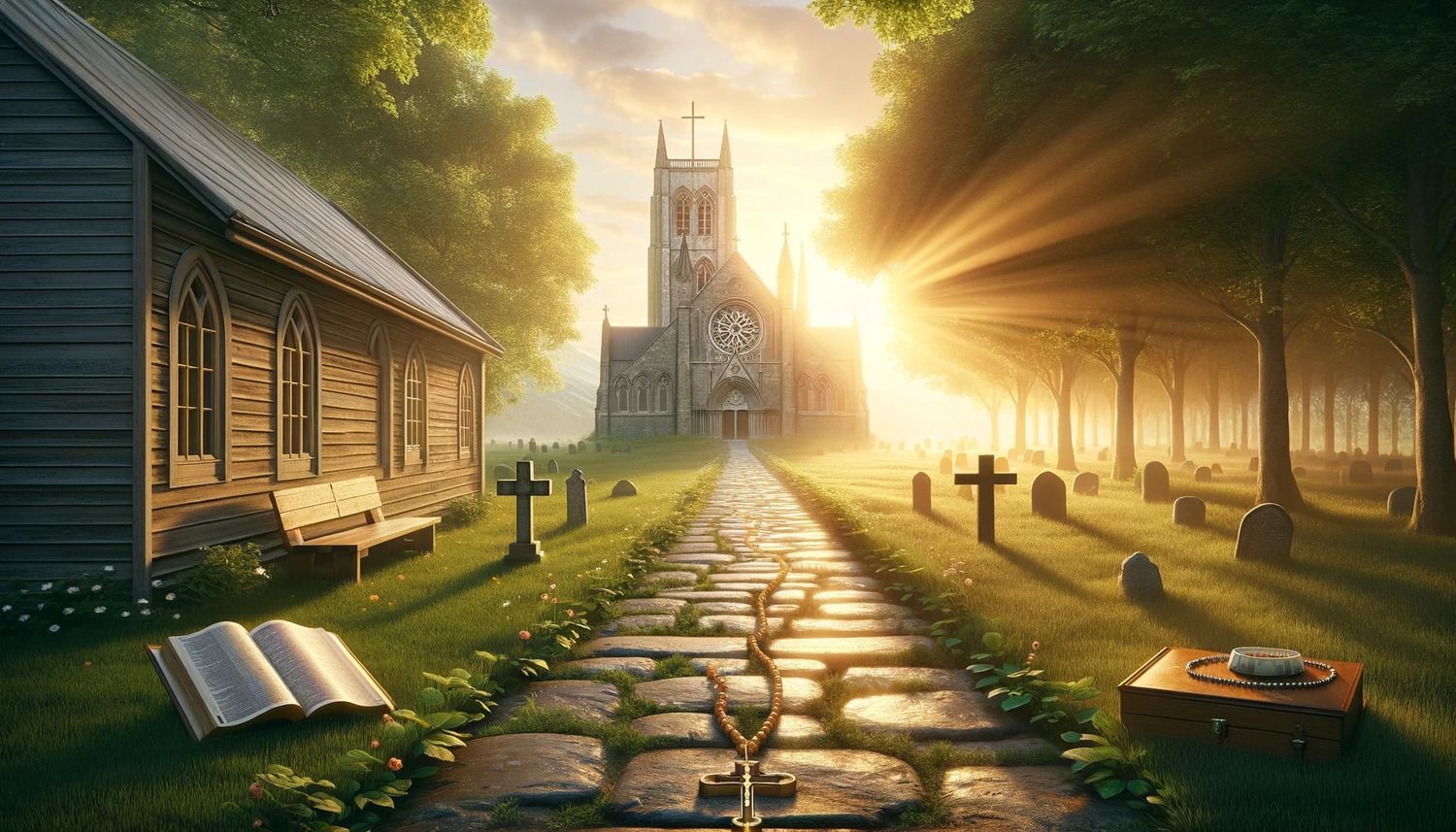Home>Theology and Spirituality>Why Is Catholicism So Dark
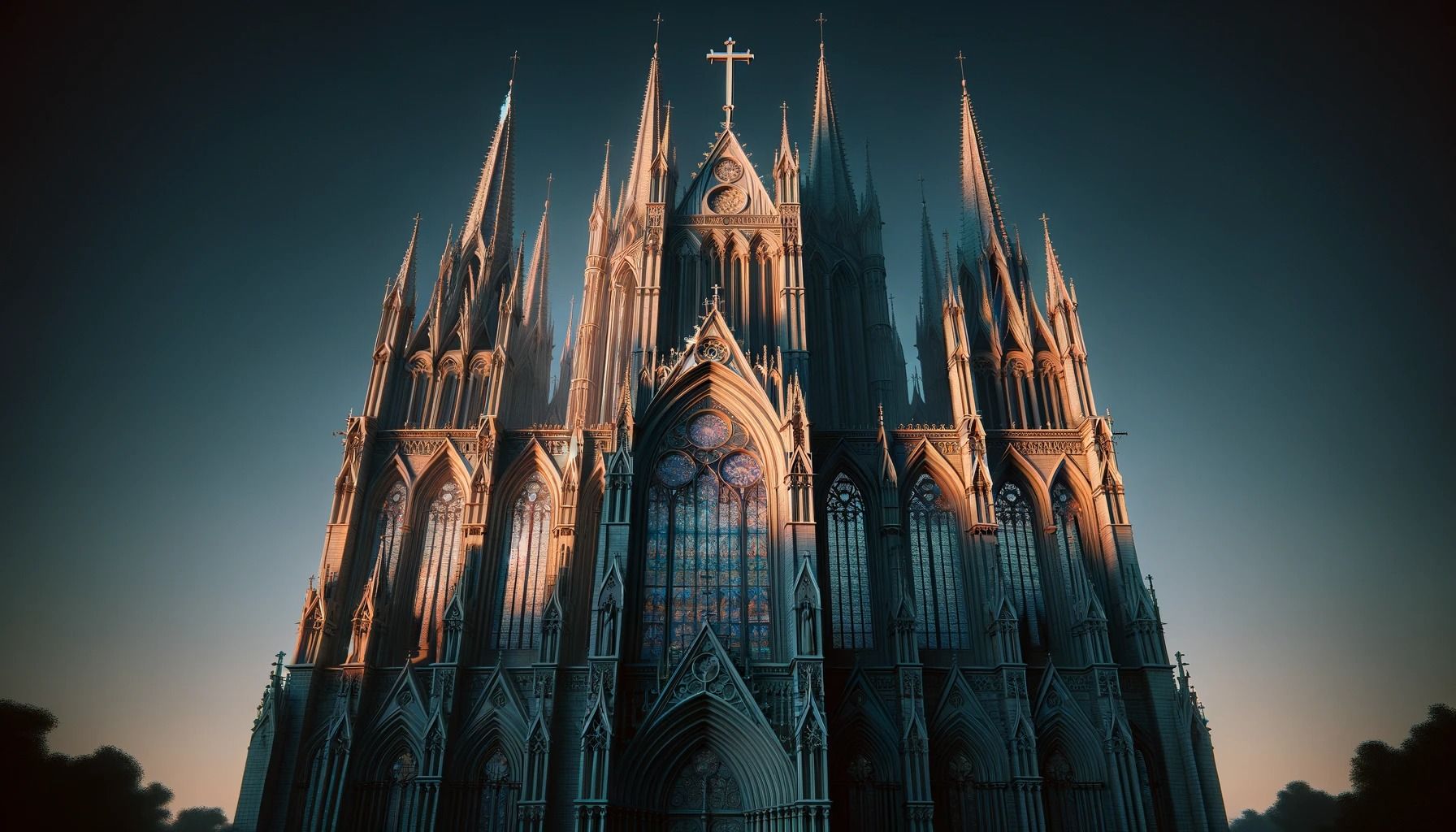

Theology and Spirituality
Why Is Catholicism So Dark
Published: February 15, 2024
Peter Smith, Editorial Director at Christian.net, combines deep insights into faith, politics, and culture to lead content creation that resonates widely. Awarded for his contributions to religious discourse, he previously headed a major organization for religious communicators, enhancing dialogue on faith's societal impacts.
Explore the depths of Catholic theology and spirituality to understand the enigmatic allure of its profound darkness. Uncover the mysteries and complexities of Catholicism's spiritual traditions.
(Many of the links in this article redirect to a specific reviewed product. Your purchase of these products through affiliate links helps to generate commission for Christian.net, at no extra cost. Learn more)
Table of Contents
Introduction
Catholicism, with its rich history and profound spiritual traditions, has often been perceived as enigmatic and mysterious. The allure of its ancient rituals, ornate cathedrals, and deep theological doctrines has captivated the imagination of many. However, to some, Catholicism may appear dark and somber, evoking images of solemn rituals, penitential practices, and a focus on sin and suffering.
In this article, we will delve into the multifaceted aspects that contribute to the perception of Catholicism as dark. We will explore the historical context of Catholicism, the role of tradition and rituals, the influence of art and architecture, the theology of sin and redemption, and the impact of cultural and societal factors. By examining these elements, we aim to unravel the complexities that have shaped the perception of Catholicism as a somber and mysterious faith.
Join us on this enlightening journey as we unravel the enigma of Catholicism and gain a deeper understanding of why it is often perceived as dark.
Historical Context of Catholicism
The historical context of Catholicism is deeply intertwined with the annals of human civilization, tracing its origins to the early Christian communities established by the apostles and disciples of Jesus Christ. As Christianity spread across the Roman Empire, the ecclesiastical structure evolved, eventually giving rise to the Catholic Church as a dominant religious institution. The fusion of Roman administrative practices with Christian ecclesiastical authority solidified the hierarchical framework of the Church, establishing a centralized power structure that endured through the centuries.
The medieval period witnessed the zenith of Catholic influence, as the Church wielded immense power over matters of faith, governance, and intellectual pursuits. The intertwining of religious and secular authority led to a complex tapestry of political intrigue, theological debates, and cultural expressions that shaped the medieval worldview. The era was marked by the construction of awe-inspiring cathedrals, the flourishing of scholastic philosophy, and the fervent devotion of the faithful to the sacramental life of the Church.
However, the historical narrative of Catholicism also bears witness to periods of tumultuous upheaval, such as the Great Schism and the Protestant Reformation, which fractured the unity of Christendom and gave rise to divergent theological traditions. These seismic shifts reverberated across Europe, igniting religious conflicts, ideological fervor, and profound introspection within the Catholic Church.
Moreover, the expansion of European colonial powers in the Age of Discovery brought Catholicism to distant shores, where it intersected with indigenous cultures, often resulting in syncretic expressions of faith. The encounter between Catholic missionaries and diverse civilizations engendered a complex interplay of religious assimilation, cultural exchange, and, at times, tragic consequences.
The historical context of Catholicism, therefore, encompasses a tapestry of triumphs and tribulations, grandeur and humility, unity and division. It reflects the ebb and flow of human history, bearing the indelible imprints of saints and sinners, councils and controversies, and the enduring quest for spiritual truth amidst the complexities of the human experience. This historical backdrop provides a profound lens through which the enigmatic nature of Catholicism can be understood, offering insights into the intricate tapestry of faith, culture, and the human condition.
The Role of Tradition and Rituals
The essence of Catholicism is intricately woven with a rich tapestry of tradition and rituals that have endured through centuries, shaping the spiritual landscape of the faithful. These time-honored practices serve as conduits for the transmission of sacred beliefs, the commemoration of pivotal events in salvation history, and the cultivation of a profound sense of communal identity.
At the heart of Catholic tradition lies the liturgical calendar, a rhythmic cycle of feasts, fasts, and seasons that punctuates the passage of time with sacred significance. From the jubilant exultation of Easter to the reflective solemnity of Lent, each liturgical season invites the faithful to immerse themselves in the timeless narrative of redemption, fostering a deep spiritual introspection and renewal.
Rituals, imbued with symbolic gestures and profound meaning, form the bedrock of Catholic worship. The sacraments, sacred rites instituted by Christ Himself, serve as pivotal moments of encounter with the divine. Baptism, Confirmation, Eucharist, Reconciliation, Anointing of the Sick, Holy Orders, and Matrimony constitute the sacramental tapestry that weaves together the fabric of Catholic life, marking the milestones of spiritual initiation, sustenance, healing, and vocation.
The veneration of relics, the recitation of the Rosary, the adoration of the Blessed Sacrament, and the observance of devotional practices to the saints are among the myriad rituals that permeate the Catholic ethos, fostering a profound sense of continuity with the communion of saints and the living tradition of the Church.
Moreover, the liturgical splendor of Catholic worship, with its reverent incense, resplendent vestments, sacred music, and timeless architectural settings, evokes a transcendent aesthetic that elevates the soul to contemplate the divine mysteries. The intricate choreography of the Mass, the heart of Catholic worship, unfolds as a symphonic interplay of ritual actions, sacred words, and communal participation, encapsulating the essence of Catholic tradition in a profound and tangible manner.
In essence, the role of tradition and rituals in Catholicism serves as a testament to the enduring legacy of faith, the continuity of sacred practices, and the profound interconnectedness of the faithful across time and space. These traditions and rituals form the spiritual sinew that binds the mystical body of Christ, fostering a sense of unity, continuity, and transcendence that transcends the temporal confines of human existence.
The Influence of Art and Architecture
The influence of art and architecture within Catholicism transcends mere aesthetic expression; it serves as a profound embodiment of the faith, encapsulating the transcendent beauty and theological depth of the Catholic tradition. From the resplendent grandeur of cathedrals to the exquisite detail of sacred artworks, the visual and architectural elements of Catholicism evoke a sense of awe, reverence, and spiritual contemplation.
Catholic art, spanning centuries of creative expression, reflects a rich tapestry of biblical narratives, theological themes, and devotional fervor. The luminous hues of stained glass windows, the intricate brushstrokes of religious paintings, and the masterful craftsmanship of sculptures converge to convey the sacred mysteries of the faith. The portrayal of saints, martyrs, and biblical scenes not only serves as a visual narrative of salvation history but also as a means of inspiring devotion, contemplation, and spiritual edification.
Furthermore, the architectural marvels of cathedrals, basilicas, and monastic structures stand as testaments to the enduring human quest to manifest the divine in tangible form. The soaring spires, vaulted ceilings, and ornate embellishments of these sacred edifices evoke a sense of transcendence, inviting the faithful to lift their hearts and minds to the heavenly realms. The layout of these architectural wonders, often designed to draw the gaze towards the altar and the sacred liturgical focal points, reinforces the sense of pilgrimage and spiritual ascent within the sacred space.
The symbiotic relationship between art, architecture, and Catholic spirituality is exemplified in the concept of "sacred beauty," where the aesthetic elements serve as conduits for encountering the divine. The interplay of light and shadow, the harmonious proportions, and the evocative symbolism woven into the artistic and architectural expressions of Catholicism converge to create an immersive environment that elevates the soul and fosters a profound sense of the sacred.
In essence, the influence of art and architecture within Catholicism transcends the realm of mere adornment; it serves as a profound means of encapsulating the ineffable beauty of the divine, inviting the faithful to behold the transcendent splendor and contemplate the eternal truths enshrined within the visual and architectural tapestry of the faith.
The Theology of Sin and Redemption
Central to Catholicism is the profound theology of sin and redemption, which forms the theological bedrock of the faith. The concept of sin, rooted in the narrative of the Fall in the book of Genesis, delineates the rupture of humanity's communion with God, resulting in a state of moral and spiritual estrangement. This foundational understanding of sin permeates Catholic theology, shaping its soteriological framework and the redemptive narrative that unfolds through the person of Jesus Christ.
Catholic theology articulates sin as a multifaceted reality, encompassing not only individual transgressions but also the pervasive influence of sin within the human condition. The doctrine of original sin elucidates the inherited consequences of the primal disobedience, underscoring the universal need for redemption and restoration. This theological perspective on sin acknowledges the complexities of human frailty, the allure of moral compromise, and the existential yearning for reconciliation with the divine.
In juxtaposition to the stark reality of sin, the theology of redemption illuminates the salvific mission of Jesus Christ, who, through His incarnation, passion, death, and resurrection, inaugurated the divine plan of reconciliation. The Catholic understanding of redemption encompasses the transformative power of Christ's atoning sacrifice, which liberates humanity from the bondage of sin and offers the promise of eternal life. The sacramental economy of the Church, particularly the Eucharist, stands as the locus where the redemptive grace of Christ is efficaciously communicated to the faithful, effecting spiritual healing and communion with the Triune God.
Moreover, the Catholic theological tradition expounds on the concept of moral regeneration and sanctification, wherein the redemptive grace of Christ engenders a transformative renewal of the human person, enabling a participation in the divine life and the cultivation of virtuous living. The theological synthesis of sin and redemption within Catholicism underscores the profound narrative of God's mercy, the transformative power of grace, and the invitation to embrace the redemptive love of Christ as the antidote to the existential predicament of sin.
In essence, the theology of sin and redemption within Catholicism encapsulates the profound narrative of human brokenness and divine restoration, offering a theological framework that addresses the complexities of sin, the transformative power of redemption, and the enduring hope of reconciliation with God.
Read more: Why Catholicism Or Orthodoxy
The Impact of Cultural and Societal Factors
The perception of Catholicism as dark is significantly influenced by cultural and societal factors that have shaped the collective understanding of the faith. Throughout history, Catholicism has intersected with diverse cultural milieus, each leaving an indelible imprint on the interpretation and portrayal of the faith. The interplay between cultural dynamics and the dissemination of Catholicism has engendered a complex tapestry of perceptions, traditions, and expressions that contribute to its enigmatic aura.
In regions where Catholicism took root, the fusion of indigenous beliefs and practices with Catholic rituals and symbolism gave rise to syncretic expressions of faith. This amalgamation of cultural elements often imbued Catholicism with a sense of mysticism and ritualistic fervor, contributing to its perceived enigmatic nature. Moreover, the visual and performative aspects of Catholic rituals, such as processions, icon veneration, and religious festivals, became intertwined with local customs, infusing Catholicism with a rich tapestry of cultural nuances.
Furthermore, the portrayal of Catholicism in art, literature, and popular culture has been influenced by prevailing societal attitudes and historical contexts. In periods marked by political upheaval, religious schisms, or existential angst, the artistic and literary representations of Catholic themes often reflected the prevailing mood, portraying the faith through a lens of solemnity, introspection, or even foreboding. These cultural depictions, whether in the form of paintings, novels, or cinematic narratives, have contributed to the perception of Catholicism as possessing a dark and mysterious allure.
Societal factors, including historical events, power dynamics, and prevailing religious attitudes, have also played a pivotal role in shaping the perception of Catholicism. The historical association of Catholicism with political power, the inquisitorial legacy, and the tumultuous periods of religious conflict have contributed to a narrative of Catholicism as wielding authority with an air of solemnity and severity. Additionally, the portrayal of Catholic religious figures, such as saints and clergy, within the societal framework has influenced the perception of the faith, often casting it in a somber or enigmatic light.
In contemporary society, the impact of cultural and societal factors continues to shape the perception of Catholicism, as the interplay of globalization, secularization, and diverse cultural narratives influences how the faith is portrayed and understood. The enigmatic allure of Catholicism, intertwined with cultural and societal influences, continues to captivate the imagination and evoke a sense of mystery, inviting contemplation and exploration of its multifaceted nature.
Conclusion
In conclusion, the perception of Catholicism as dark is a multifaceted phenomenon shaped by historical, theological, cultural, and societal factors. The enigmatic allure of Catholicism, with its rich tapestry of tradition, rituals, art, and theological depth, has contributed to its portrayal as possessing a mysterious and solemn character. The historical context of Catholicism, marked by triumphs, tribulations, and the interplay of religious and secular authority, has left an indelible imprint on its perceived enigmatic nature.
The role of tradition and rituals within Catholicism serves as a testament to the enduring legacy of faith, fostering a sense of unity, continuity, and transcendence. The influence of art and architecture, encapsulating the transcendent beauty and theological depth of the Catholic tradition, evokes a sense of awe, reverence, and spiritual contemplation. The theology of sin and redemption, addressing the complexities of sin, the transformative power of redemption, and the enduring hope of reconciliation with God, forms the theological bedrock of the faith.
Moreover, the impact of cultural and societal factors has contributed to the portrayal of Catholicism as possessing a dark and mysterious allure, intersecting with diverse cultural milieus and shaping the collective understanding of the faith. The interplay of globalization, secularization, and diverse cultural narratives continues to influence how the faith is portrayed and understood, perpetuating its enigmatic allure.
In essence, the perception of Catholicism as dark is a testament to the intricate tapestry of faith, culture, and the human condition. It invites contemplation, exploration, and a deeper understanding of the profound complexities that have shaped the enigmatic nature of Catholicism. As we unravel the layers of its historical, theological, and cultural dimensions, we gain a deeper appreciation for the enduring allure of Catholicism and the timeless quest for spiritual truth that continues to captivate the human spirit.

